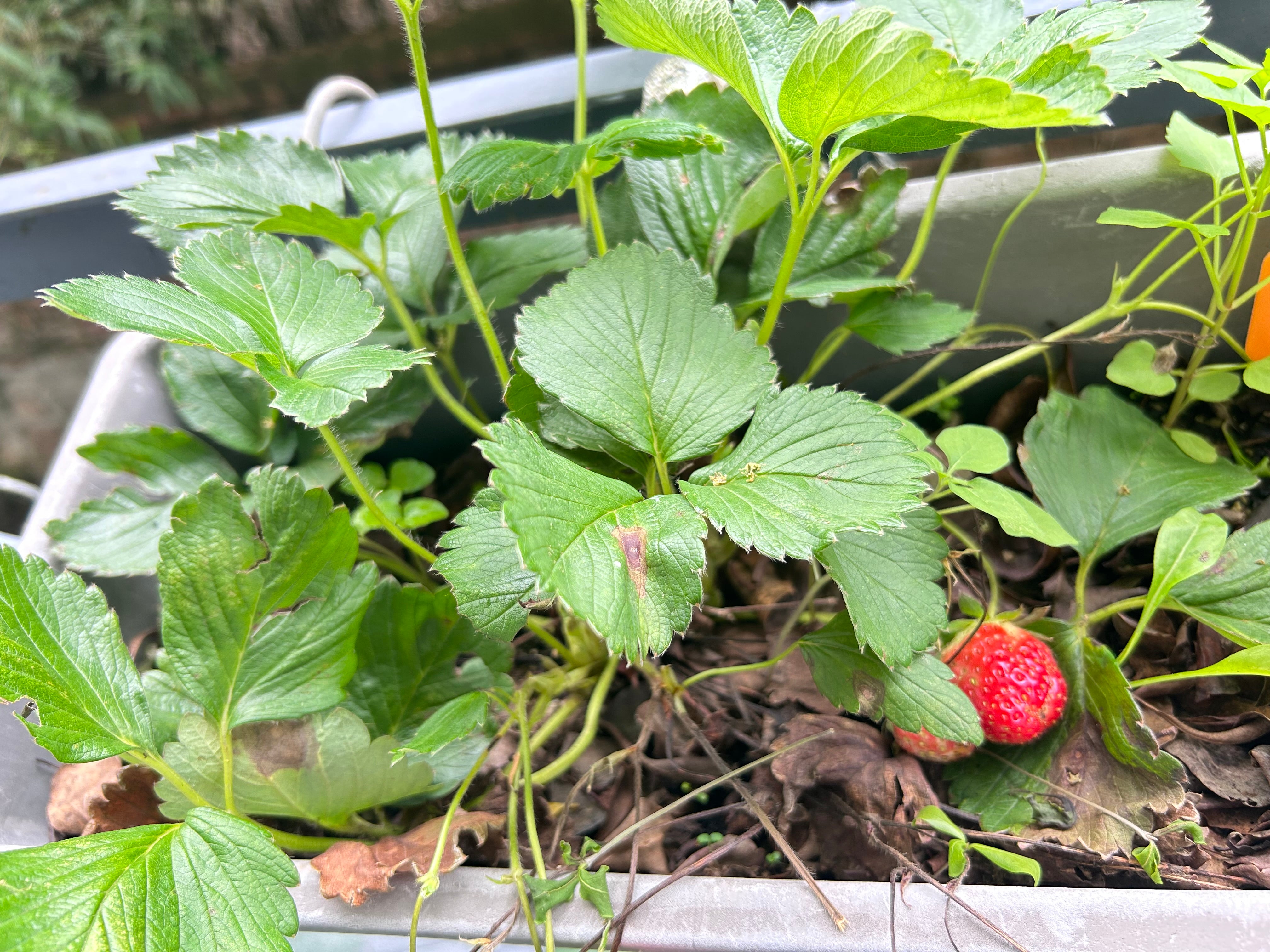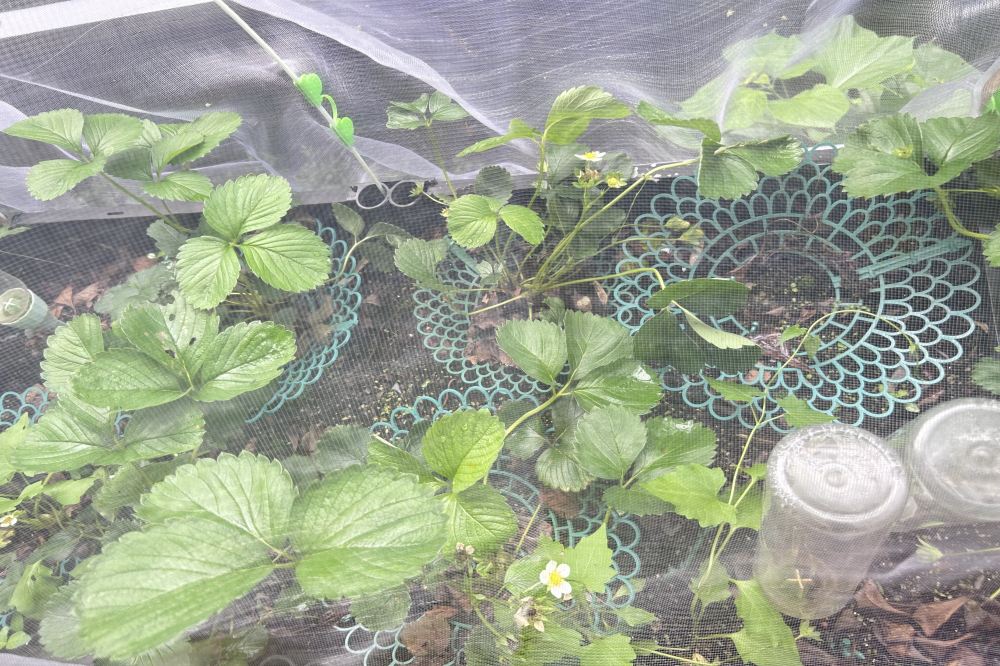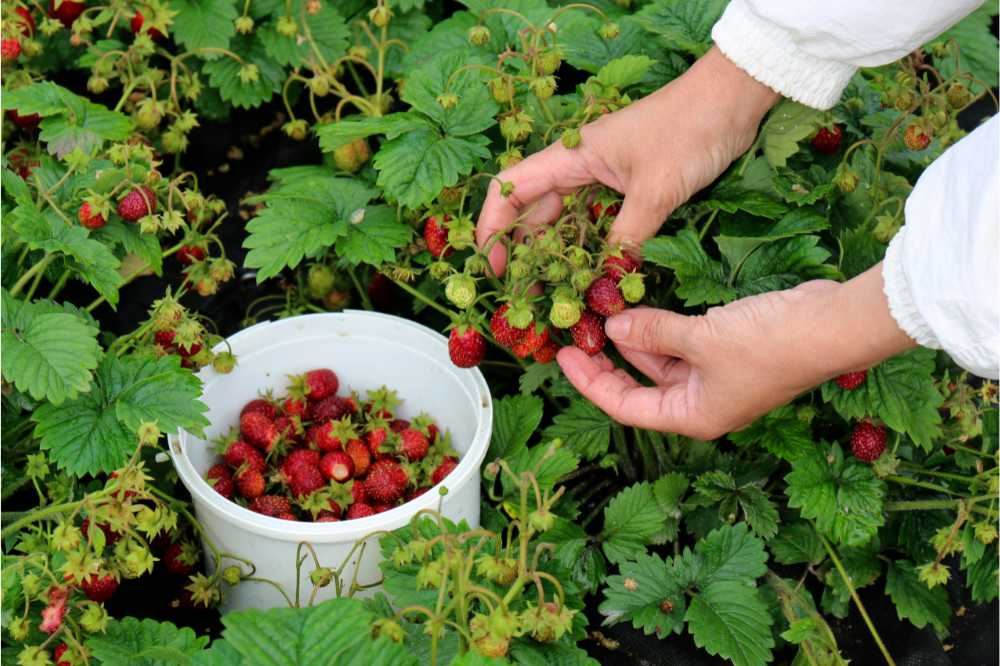Expert Tips for How to Grow Strawberries on Raised Bed
Get ready to transform your garden into a strawberry haven. This detailed information is your go for planting strawberries with ease and reaping delicious rewards. Learn essential strawberry growing tips, from choosing the right varieties for your area to mastering raised bed gardening. We'll explore eco-friendly practices like using organic berry plants and ensuring optimal sunlight and drainage.
Whether you're a seasoned gardener or just starting out, this guide simplifies the art of strawberry planting care. Discover the joy of growing your own strawberries, and enjoy the sweet taste of success in every berry bite! So, roll up your sleeves, grab your gardening tools, and let's cultivate a patch of sweetness that will delight your taste buds and bring joy to your garden.

Why Grow Strawberries
Growing strawberries is crucial for their nutritional richness, providing essential vitamins and antioxidants. Beyond personal health benefits, cultivating strawberries holds economic value, offering income opportunities for farmers and gardeners. Embracing organic methods in planting strawberry reduces environmental impact by minimizing synthetic pesticide use.
Additionally, homegrown strawberries empower individuals to take control of their food sources, focusing sustainability. This cultivation process becomes an educational platform, imparting knowledge about plant life cycles and sustainable agriculture practices, making it rewarding for both personal and community well-being.
Benefits of Organic Berry Plants
Marigolds thrive in sunny spots, effortlessly adding colour to your garden with their vibrant shades of yellow, red, and gold throughout the summer. While marigolds can reach impressive heights of 3 to 5 feet, there are also more petite and compact varieties available for those seeking a shorter and tidier display.
Plant marigolds in areas that receive ample sunlight. They prefer well-drained soil, keeping their roots happy and healthy. These resilient beauties don't demand excessive watering. Let the soil dry out between watering sessions to keep them content.
Beyond all this, marigolds come with a bonus—they naturally repel certain pests. Planting them in your garden can get rid of pests naturally.
- Environmental Sustainability: Avoids synthetic pesticides and fertilizers; Reduces chemical runoff, contributing to a healthier ecosystem.
- Residue-Free Fruits: Fruits produced are free from harmful residues; Promotes cleaner and safer food consumption.
- Soil Health: Prioritizes soil health through organic cultivation methods; Supports a balanced and sustainable soil ecosystem.
- Nutritional Benefits: Consuming organic berries provides nutritional benefits; Mitigates potential health risks associated with chemical residues.
- Promoting a Sustainable Food System: Supports a cleaner and more sustainable food production system; Encourages environmentally friendly practices in agriculture.
Strawberry Growing Tips

Overview of Raised Bed Gardening
Raised bed gardening involves creating elevated planting areas, typically bordered by wood or other materials. This method offers several advantages, including improved drainage, better soil control, and reduced weed growth. Raised garden beds warm up faster in spring, extending the growing season and allowing for earlier planting. They also provide better accessibility for planting, maintenance, and harvesting.
Additionally, garden beds are an efficient solution for small spaces, allowing for concentrated planting and soil composition, leading to healthier plants and higher yields.
Strawberry Variety Selection

1. Choose strawberry varieties suited to your climate and soil conditions
Picking the perfect strawberry types is key to growing a successful crop. Different varieties thrive in specific climates and soil types. Consider factors like temperature, sunlight, and soil acidity to match the requirements for strawberry planting care. By aligning your selection with local conditions, you ensure optimal growth, robust plants, and a bountiful harvest. This thoughtful approach enhances the adaptability of the strawberries, making them better equipped to withstand environmental challenges and produce high-quality fruit.
2. Opt for organic berry plants to promote eco-friendly and sustainable gardening.
Selecting organic berry plants aligns with a commitment to environmentally conscious gardening practices. Organic cultivation reduces the ecological impact of traditional farming. By choosing organic varieties, you contribute to soil health, support biodiversity, and safeguard water resources from chemical contamination. Organic farming methods prioritize sustainability, emphasizing natural processes and fostering a harmonious relationship between agriculture and the environment. This choice not only benefits the immediate garden but also contributes to a broader movement promoting healthier ecosystems and a more sustainable food system.
Raised Bed Preparation

1. Select an appropriate location for raised beds, ensuring good sunlight and drainage.
Choosing the right location for garden beds is important for successful gardening. Making a spot that receives Good amount of sunlight, ideally at least 6-8 hours per day, to promote optimal plant growth and fruit production. Additionally, ensure proper drainage to prevent waterlogging, which can lead to rotten roots and other issues. A well-ventilated area with good air circulation further aids in minimizing the risk of diseases.
2. Construct raised beds with suitable materials, considering dimensions for optimal growth.
When building raised beds, use suitable materials like untreated wood, concrete blocks, or recycled plastic. Consider dimensions carefully, aiming for a width that allows easy reach from both sides, typically around 3-4 feet. Optimal height ranges from 6 to 12 inches, For easy root development and ensuring good strawberry planting care for soil depth to develop.
3. Prepare the soil in raised beds, focusing on organic methods to enhance fertility.
Prepare the soil in raised beds by focusing on organic methods to enhance fertility and growth. Start with a quality organic soil mix or amend the existing soil with compost, well-rotted manure, and organic matter. This enhances nutrient content and promotes a healthy microbial environment. Regularly add compost or organic mulch to maintain soil structure, moisture retention, and overall fertility. By regular organic practices, you create a sustainable and nutrient-rich foundation for your strawberry plants to flourish in the garden.
Strawberry Planting Guide

Follow best practices for planting strawberries, considering spacing and arrangement.
When growing strawberries in raised beds, optimal spacing and arrangement are crucial for a developing crop. Maintain a spacing of 12 to 18 inches between plants and 3 feet between rows to ensure proper air circulation and sunlight exposure. Planting in staggered rows maximizes space utilization. Consider the variety's specific recommendations, adjusting spacing accordingly. Ensure well-drained soil and proper irrigation, avoiding waterlogged conditions. These strawberry planting tips prevent diseases and enhance overall plant health, resulting in robust strawberry production.
Integrate organic berry plants into the raised beds, promoting a chemical-free environment.
Embracing
Strawberries Plant Care and Maintenance

Implement efficient watering and irrigation systems to meet the needs of strawberry plants.
Firstly, to ensure optimal growth, strawberries require a consistent and well-regulated water supply. As a next step, it’s vital to implement efficient watering and irrigation systems to meet these needs. Subsequently, utilizing strategies such as drip irrigation or soaker hoses directed at the base of plants can be particularly beneficial. These methods help prevent moisture from seeping into the foliage, consequently reducing the risk of diseases.
Adequate water, especially during fruit development, promotes plump and flavorful berries. Regular monitoring and adjusting irrigation based on weather conditions and plant requirements contribute to a healthy and productive strawberry patch.
Manage soil health through mulching, organic fertilization, and weed control.
Maintaining soil health is paramount for successful strawberry cultivation. Mulching serves as a protective layer, conserving moisture, preventing weed growth, and regulating soil temperature. Organic fertilization replenishes essential nutrients, fostering robust plant development and enhancing fruit quality.
Weed control in garden beds ensures that strawberries aren't competing for nutrients, sunlight, and water. A healthy soil ecosystem, achieved through these practices, supports vigorous root systems and overall plant vitality, contributing to abundant harvests of organic strawberries.
Monitor for pests and diseases, employing natural methods for control.
Strawberry plants are susceptible to various pests and diseases that can impact yield and quality. Regular monitoring for signs of infestation is crucial. Employing natural methods for pest and disease control, such as introducing beneficial insects or using neem oil, helps maintain a balanced ecosystem without resorting to harmful chemicals. Spotting problems early and taking action can stop them from becoming big headaches. Companion planting and maintaining proper plant spacing also contribute to pest resistance. This holistic approach ensures the health of organic berry plants, promoting sustainable and environmentally friendly strawberry cultivation.
Harvesting and Storage

Determine the right time for harvesting strawberries based on their readiness.
Harvesting strawberries at the optimal time is crucial for flavor and texture. Wait until the berries are fully red (not pink), with no white shoulders, indicating ripeness. Gently lift the leaves and inspect the fruit, ensuring a rich color and plumpness. Harvesting in the morning when temperatures are cooler helps preserve flavor. Taste-testing a few berries can confirm sweetness. Additionally, consider the specific variety's recommended harvest period. Frequent picking promotes continuous production throughout the season, maximizing yield.
Adopt gentle harvesting practices and ensure proper storage for organic berries.
In order to preserve the delicate nature of organic berries, begin by using a small pair of shears or pinch the stem above the berry. Then, be careful to avoid pulling, as doing so can inadvertently damage the plant and neighboring fruits. Consequently, it’s important to handle berries with care to prevent bruising and maintain quality.
Once you have finished harvesting, the next step is to store strawberries in the refrigerator, unwashed, and in a single layer to prevent mold. Following that, make sure to rinse them just before consumption to retain their freshness. To conclude, always opt for: environmentally friendly packaging or reusable containers for storage. This choice helps preserve our environment as well.
Extended Shelf Life: Post-Harvest Handling and Storage Tips
Determining the right time for harvesting strawberries is merely the initial step in the journey to flavorful, plump berries. Moving forward, it is essential to understand the art of adopting gentle harvesting practices in order to preserve the delicate nature of organic berries. The subsequent step is to learn how to use small shears or pinch the stem above the berry, which ultimately prevents damage, thus ensuring optimal quality for your harvest.
Explore methods such as refrigerating unwashed strawberries in a single layer to prevent mold formation. These post-harvest handling and storage tips not only extend the shelf life of your organic strawberries but also contribute to a sustainable and eco-friendly approach to enjoying the fruits of your labor.
Conclusion
In conclusion, cultivation strawberries is not only a rewarding endeavor for personal and community well-being but also a sustainable and eco-conscious practice. From the nutritional richness of homegrown berries to the economic opportunities for farmers, the benefits are diverse. Embracing organic methods and integrating these delightful fruits into raised beds further amplifies the positive impact, fostering a chemical-free environment and promoting a greener approach to gardening.
The careful selection of varieties, raised bed preparation, and meticulous care strategies contribute to a bountiful harvest. Harvesting at the right time and adopting gentle practices ensure the preservation of flavor and texture, completing the cycle of a thoughtful and environmentally friendly strawberry cultivation journey.
Choose A Strawberry Bed
By Phillip Pense
Author bio: Owner of the penseberry farm. Phillip Pense is a writer who contributes insightful articles and helpful advice regarding gardening and fruit plants.I love plants and gardening, inspiring others to create their own lush sanctuaries.



I live in Ocala Florida, when can I start my garden?
I don’t have a raised bed for my strawberry plants, but they are doing fair where I have them. What is the actual growing season, and
what do I do in the winter season ?